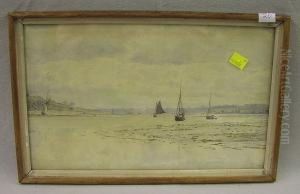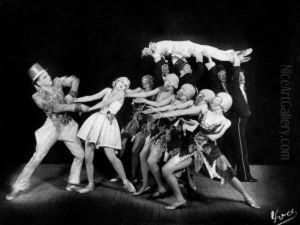Hans Robertson Paintings
Hans Robertson was a notable German photographer known particularly for his contributions to the field of portrait photography. Born in 1883 in Berlin, he would go on to become one of the most renowned portrait photographers of the early 20th century. His work was characterized by its clear, sharp focus and the ability to capture the personality and essence of his subjects, many of whom were notable figures of the time.
Robertson received his artistic training in Berlin and Paris, which were two of the most significant centers for art and photography during his formative years. He was greatly influenced by the pictorialist movement, which emphasized the aesthetic qualities of photography and often sought to imitate the style and subjects of painting. However, Robertson's approach to photography also showed elements of the emerging modernist trends, focusing on realism and the distinctiveness of the photographic medium.
In the 1920s, Robertson's career flourished as he opened a portrait studio in Berlin. His clientele included a wide range of society's elite, from cultural icons and politicians to intellectuals and artists. Robertson's ability to capture the spirit of the Weimar Republic and its diverse personalities made him a sought-after photographer during this vibrant and tumultuous period in German history.
As the political climate in Germany changed with the rise of the Nazi regime, Robertson, like many artists and intellectuals of his time, found the environment increasingly repressive. In 1933, he emigrated to London, where he continued his work as a portrait photographer. During his time in London, he captured images of British society, including members of the royal family, and continued to build his reputation as a leading portraitist.
Hans Robertson's contributions to photography were not only limited to portraiture. He also worked in other genres, including fashion photography and photojournalism, and his work was published in numerous magazines and exhibited in galleries across Europe. Despite the challenges he faced, including the disruption of his career due to the political situation in Germany and the need to rebuild his practice in a new country, his legacy endures through his compelling portraits, which remain a testament to his skill and vision.
Robertson passed away in 1950, leaving behind a body of work that continues to be studied and admired for its artistry and historical significance. His photographs are held in the collections of major museums and galleries around the world, and he is remembered as a pioneer in portrait photography and an important figure in the history of 20th-century art.

